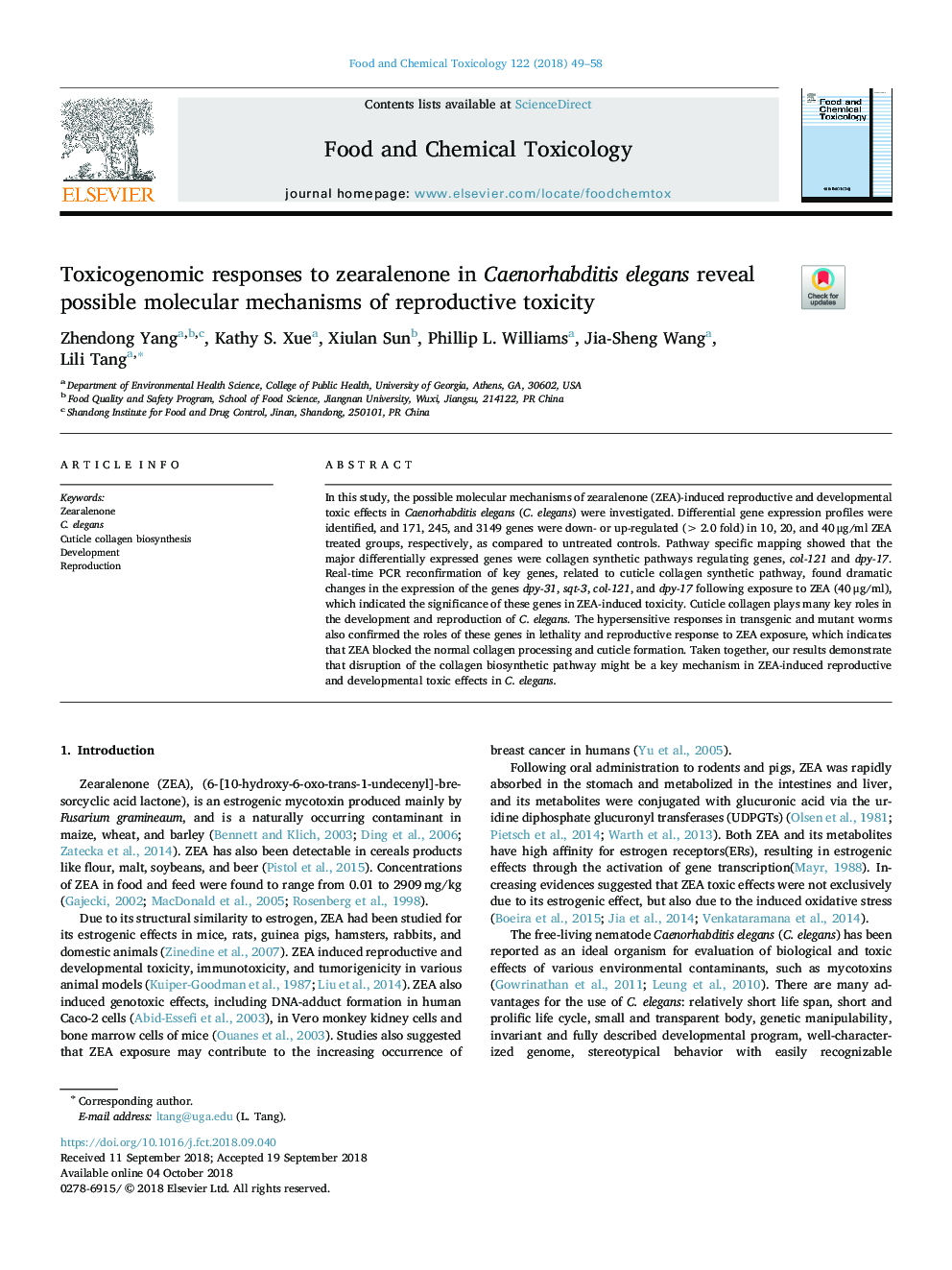| Article ID | Journal | Published Year | Pages | File Type |
|---|---|---|---|---|
| 11010644 | Food and Chemical Toxicology | 2018 | 10 Pages |
Abstract
In this study, the possible molecular mechanisms of zearalenone (ZEA)-induced reproductive and developmental toxic effects in Caenorhabditis elegans (C. elegans) were investigated. Differential gene expression profiles were identified, and 171, 245, and 3149 genes were down- or up-regulated (>2.0 fold) in 10, 20, and 40â¯Î¼g/ml ZEA treated groups, respectively, as compared to untreated controls. Pathway specific mapping showed that the major differentially expressed genes were collagen synthetic pathways regulating genes, col-121 and dpy-17. Real-time PCR reconfirmation of key genes, related to cuticle collagen synthetic pathway, found dramatic changes in the expression of the genes dpy-31, sqt-3, col-121, and dpy-17 following exposure to ZEA (40â¯Î¼g/ml), which indicated the significance of these genes in ZEA-induced toxicity. Cuticle collagen plays many key roles in the development and reproduction of C. elegans. The hypersensitive responses in transgenic and mutant worms also confirmed the roles of these genes in lethality and reproductive response to ZEA exposure, which indicates that ZEA blocked the normal collagen processing and cuticle formation. Taken together, our results demonstrate that disruption of the collagen biosynthetic pathway might be a key mechanism in ZEA-induced reproductive and developmental toxic effects in C. elegans.
Related Topics
Life Sciences
Agricultural and Biological Sciences
Food Science
Authors
Zhendong Yang, Kathy S. Xue, Xiulan Sun, Phillip L. Williams, Jia-Sheng Wang, Lili Tang,
